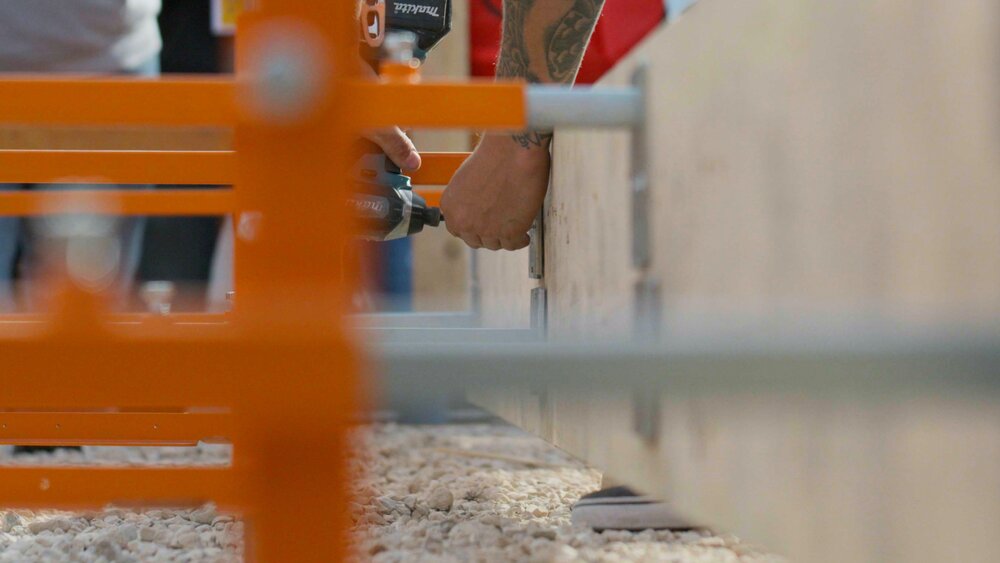One of the fastest ways to make the exterior of your home look more appealing to guests and passers-by is to create a concrete path. After all, there’s nothing that complements a landscape more than a brick home surrounded by concrete. Whether you’re looking to create a winding path with large stepping stones embedded around flowers or prefer to keep it clean and minimal with a continuous pathway, executing the perfect concrete foundation is essential.
Never underestimate the importance of a well-laid front path. From the general aesthetics through to providing a safe passage for your guests from the kerb to your front door, there really is no room for error when laying concrete.
Here’s step by step instructions on how to lay a concrete path.

Laying a concrete slab
Remember to always wear protective clothing, such as boots, long pants, and gloves when working with concrete, as exposure to skin can burn.
- To start, you’ll need to plot out the path using stakes and strings. Run a stringline from one end of the path to the other.
- Excavate the area by removing all grass, roots and other debris. Form a flat base by tamping down the soil with a rake. The path should be a depth of around 100mm. Use a tape measure to ensure the excavated ground is at a consistent height from the stringline.
- Prepare the foundation by pouring gravel in the path, so as to prevent the concrete from cracking and shifting.
- Remove the stringline, and hammer pegs into the ground at each corner of the path area. Position the formwork along edges and fix to the pegs.
- Mix the concrete following the instructions and then tip into the formwork. Remove inside pegs and use a shovel to spread concrete evenly over the ground and into the corners of the formwork.
- Use a screed board to move the concrete so that it is smooth and at the correct level.
- Concrete should begin to dry now. Use a bull-nose float to smooth the surface.
- To cure the concrete, keep it wet for a few days by covering it with plastic or hosing with water.
- Once it has dried completely, remove the formwork.
The alternative to timber formwork when making DIY concrete slabs
While it’s important to get the concrete mix ratio correct, it also comes down to the equipment you use to create those slabs. After all, it’s true what they say: a man is only as good as his tools. Now that you know the concreting steps to create the perfect foundation, it’s time to level up with the right equipment.
At MSB Form, we use the latest technology to ensure a concrete path that’s solid, long-lasting and low maintenance. As the alternative to timber formwork, we use steel, which is much more lightweight, won’t bend or warp while you’re pouring concrete, and it can be used a number of times.
Catering to the concrete and construction industries around Australia and the US, if you would like to learn more about our adjustable formwork, contact us for more information.
